Welcome to the October 8th, 2025 issue of Radio World





Welcome to the October 8th, 2025 issue of Radio World






Vol. 49 No. 21 | October 8 2025 www.radioworld.com
FOLLOW US
www.twitter.com/radioworld_news
www.facebook.com/RadioWorldMagazine www.linkedin.com/company/radio-world-futureplc
CONTENT
Managing Director, Content & Editor in Chief Paul J. McLane, paul.mclane@futurenet.com, 845-414-6105
Assistant Editor & SmartBrief Editor Elle Kehres, elle.kehres@futurenet.com
Content Producer Nick Langan, nicholas.langan@futurenet.com
Technical Advisors W.C. “Cris” Alexander, Thomas R. McGinley, Doug Irwin
Contributors: David Bialik, John Bisset, Edwin Bukont, James Careless, Ken Deutsch, Mark Durenberger, Charles Fitch, Donna Halper, Alan Jurison, Paul Kaminski, John Kean, Larry Langford, Mark Lapidus, Michael LeClair, Frank McCoy, Jim Peck, Mark Persons, Stephen M. Poole, James O’Neal, T. Carter Ross, John Schneider, Gregg Skall, Dan Slentz, Dennis Sloatman, Randy Stine, Tom Vernon, Jennifer Waits, Steve Walker, Chris Wygal
Production Manager Nicole Schilling
Senior Design Director Lisa McIntosh
Senior Art Editor Will Shum
ADVERTISING SALES
Senior Business Director & Publisher, Radio World John Casey, john.casey@futurenet.com, 845-678-3839 Advertising EMEA Raffaella Calabrese, raffaella.calabrese@futurenet.com, +39-320-891-1938
SUBSCRIBER CUSTOMER SERVICE
To subscribe, change your address, or check on your current account status, go to www.radioworld.com and click on Subscribe, email futureplc@computerfulfillment.com, call 888-266-5828, or write P.O. Box 1051, Lowell, MA 01853.
LICENSING/REPRINTS/PERMISSIONS
Radio World is available for licensing. Contact the Licensing team to discuss partnership opportunities. Head of Print Licensing Rachel Shaw licensing@futurenet.com MANAGEMENT
SVP, MD, B2B Amanda Darman-Allen
VP, Global Head of Content, B2B Carmel King MD, Content, Broadcast Tech Paul J. McLane
Global Head of Sales, Future B2B Tom Sikes Managing VP of Sales, B2B Tech Adam Goldstein VP, Global Head of Strategy & Ops, B2B Allison Markert VP, Product & Marketing, B2B Andrew Buchholz Head of Production US & UK Mark Constance Head of Design, B2B Nicole Cobban

Future US LLC, 130 West 42nd Street, 7th Floor, New York, NY 10036
All contents ©Future US, Inc. or published under licence. All rights reserved. No part of this magazine may be used, stored, transmitted or reproduced in any way without the prior written permission of the publisher. Future Publishing Limited (company number 02008885) is registered in England and Wales. Registered office: Quay House, The Ambury, Bath BA1 1UA. All information contained in this publication is for information only and is, as far as we are aware, correct at the time of going to press. Future cannot accept any responsibility for errors or inaccuracies in such information. You are advised to contact manufacturers and retailers directly with regard to the price of products/services referred to in this publication. Apps and websites mentioned in this publication are not under our control. We are not responsible for their contents or any other changes or updates to them. This magazine is fully independent and not affiliated in any way with the companies mentioned herein.
If you submit material to us, you warrant that you own the material and/ or have the necessary rights/permissions to supply the material and you automatically grant Future and its licensees a licence to publish your submission in whole or in part in any/all issues and/or editions of publications, in any format published worldwide and on associated websites, social media channels and associated products. Any material you submit is sent at your own risk and, although every care is taken, neither Future n or its employees, agents, subcontractors or licensees shall be liable for loss or damage. We assume all unsolicited material is for publication unless otherwise stated, and reserve the right to edit, amend, adapt all submissions.
Radio World (ISSN: 0274-8541) is published bi-weekly by Future US, Inc., 130 West 42nd Street, 7th Floor, New York, NY 10036. Phone: (978) 667-0352. Periodicals postage rates are paid at New York, NY and additional mailing offices. POSTMASTER: Send address changes to Radio World, PO Box 1051, Lowell, MA 01853.
Please recycle. We are committed to only using magazine paper which is derived from responsibly managed, certified forestry and chlorine-free manufacture. The paper in this magazine was sourced and produced from sustainable managed forests, conforming to strict environmental and socioeconomic standards. The manufacturing paper mill and printer hold full FSC and PEFC certification and accreditation.

Paul McLane Editor in Chief
Tim Berry tells me he has been reading Radio World for more than 40 years. Which makes me all the happier to report that Tim has been honored by the Tennessee Association of Broadcasters with its Lifetime Achievement Award.
The award recognizes individuals who have spent their careers demonstrating a longstanding commitment to the broadcasting industry in Tennessee and the local communities they serve.
As my colleague Elle Kehres reported recently, Tim is chief engineer of Knoxville’s WUOT(FM), a role he also held from 1990 to 1998.
He has also served as the longtime chief and technical director for the Vol Radio Network, which he joined in 1991. In that job he has overseen and directed the engineering operations for University of Tennessee football, men’s and women’s basketball, baseball and softball games, and statewide weekly shows on one of the largest college sports radio networks in the country.
Tim also spent many years as the chief engineer of country station WIVK, in addition to the group of stations under the Cumulus Media group in Knoxville.
“Tim has been a tireless servant and leader within the Southeastern Conference Association of Broadcasts for more than three decades,” the association wrote.
“Earlier this spring, he was presented with an award from the Southeastern Conference for his service to the University of Tennessee and the SEC. He’s also been an integral part of TAB’s Alternative Broadcast Inspection Program, providing stations with self-inspections and engineering advice to members for over two decades.”
His co-recipient is David Widener, president and general manager of Holston Valley Broadcasting Corp. With five decades in broadcast, Widener has overseen six radio and two television stations serving the Johnson City–Kingsport–Bristol Tenn./ Va. market.

Berry and Widener were honored at a banquet in August at the Country Music Hall of Fame in Nashville.
Congratulations to both of them. And kudos to the Tennessee Association of Broadcasters, for holding up the work of engineers as worthy of celebration.
On the cover
An Optibeam OB9-5 antenna monitors the 10, 12, 15, 17 and 20 m bands, anchoring a remote listening setup on Mount Rigi in Switzerland. See page 23.

Ed Miller, former national president of the Society of Broadcast Engineers and longtime engineer in Ohio, died at age 83.
Miller was president of the SBE from 1997 to 1999. During that time, the society and the National Football League announced a cooperative effort to coordinate frequency use, with the SBE appointing a game-day event frequency coordinator for each team’s home games.
Also during his tenure, the SBE Certification Committee prepared a new level of certification to test knowledge about administering local-area networks and introduced a youth membership category.
In 2013 he was named the Robert W. Flanders SBE Engineer of the Year. Then-President Ralph Hogan said at the time that Miller “has truly been one of the principal leaders of the SBE over the past 20 years.” He also was a Life Member and SBE Fellow.
In the fall of 1957, as a high-school sophomore, Miller was one of only five individuals in the country to track the radio signal from the Russian Sputnik 1 satellite. He and fellow radio club members made national news and were told they had scooped the U.S. Navy.
In 2013 Miller wrote a sketch of his career, including his work in radio and TV, his involvement with prototype IFB/Mix-Minus technology, his design and management of broadcast microwave systems, his involvement with the National Academy of Television Arts and Sciences and his consulting work for the opening of the Rock and Roll Hall of Fame and Museum. (Download that bio at https://tinyurl. com/rw-miller.)
He worked for 28 years with WEWS-TV, the Scripps Howard Broadcasting Company flagship station and ABC affiliate in Cleveland. In 2003 he retired as vice president of engineering at ProVideo Systems. He later worked as a consultant/project engineer with PATLIN Electronics Inc.
A North Carolina judge ordered $50 million be paid to the family of a Charlotte TV station meteorologist killed in a helicopter crash, according to the Associated Press.
Meteorologist Jason Myers and pilot Chip Tayag died in 2022 after the helicopter crashed. The judge directed insurers for the Total Traffic & Weather Network, iHeartCommunications and iHeartMedia to make the payment. The court found the companies that owned and operated the aircraft liable in a wrongful death lawsuit brought by Myers’ widow.
Tayag, the pilot, worked for the Total Traffic & Weather Network, owned by iHeartMedia, which declined to comment to AP.


Above
shortages, or worse, at many public media entities.
CPB planned to close its operations on Sept. 30. Public radio stations, some of which receive up to 40 percent of their financial support from the government, are looking at ways to bridge the funding gap brought on by the Trump administration’s defunding of public media.
National Public Radio President/CEO Katherine Maher has said that as many as 80 NPR-affiliated stations could be shuttered in the next year because of the funding cuts.
efforts. According to Current, an online newsletter that covers public media, Louisville Public Media received $400,000 in pledges during a 24-hour span in August.
Donors in Seattle stepped up $1.5 million in pledges for KUOW(FM) during a recent campaign.
Several philanthropic organizations created a Public Media Bridge Fund and pledged $27 million in support for stations severely hurt by federal funding cuts.
Vermont Public Radio lost about $2 million in federal funding per year as a result of the cuts. It raised approximately $1 million in a statewide campaign. Yet VPR
announced in late August that it had laid off 15 employees, about 14% of its workforce.
“This is a heartbreaking moment,” Vermont Public CEO Vijay Singh stated on its website. “We don’t do this lightly and we do it with the intent of setting ourselves up for the best service we can provide for our community.”
The organization is considering other cost-saving measures, Singh said, adding that programming cuts have not been necessary yet. Members of Vermont Public’s executive team took pay cuts, according to the post.
Industry observers say public media outlets in rural communities that were more dependent on CPB funding could be hard hit. There are approximately 160 public radio stations in rural communities, according to CPB, including 27 in Alaska. According to a database from Semipublic, four of the 10 most reliant public media outlets are in Alaska.
Meanwhile, public media organizations across the country are trying to decide how to navigate this new reality.
WYSO(FM) in southwest Ohio, operated by Antioch College in Yellow Springs, is facing a budget deficit. “We must raise an additional $300,000 this fiscal year and at least $300,000 in FY27 to make up for the funding we expected to receive from the Corporation for Public Broadcasting,” its website stated.
Colorado Public Radio (CPR) says 95% of its funding comes from the communities it serves. Yet the retraction of previously authorized federal funding, it said, will be felt by individual radio stations.
For instance, KRZA(FM), licensed to Alamosa, Colo., lost nearly half of its annual budget, according to a post on the CPR website.
Some stations, including KSUT(FM) in the Four Corners region of Colorado, may be eligible for some federal funds intended to backfill the losses from the funding cuts. The money, according to CPR, is the result of a deal struck by Republican Sen. Mike Rounds, who worked out an arrangement to have some money reallocated from the Department of Interior to support tribal stations.
Ideastream Public Media, which serves northeastern Ohio, says it lost nearly $3 million in CPB funding, about 10% of its budget. Based in Cleveland, it serves listeners on two FM signals, WCLV and WKSU, the latter of which is licensed to Kent State University and leased by Ideastream.
President/CEO Kevin Martin said, “The hope is supporters and listeners will make up some of it, but it will be difficult for many public broadcasters. I think we’ll see consolidation where it makes geographic and economic sense, with smaller broadcasters being absorbed by larger organizations.”
Martin expects a lot of schools and universities that hold broadcast licenses to reconsider their options. “They’ll likely start asking if broadcast is really related to their core mission, and ask if there might be another organization or entity that could continue the service in ways they are

now unable to do. I think there will be a reexamination by public media organizations to determine how to proceed.”
NPR might also have to reconsider its relationship with its radio affiliates, Martin says.
“Those stations will now have less revenue, and there might be fewer of them. What we’ll have to figure out is if (NPR) increases our dues, can we pay it? Or do we shift to more local content and explore options geographically to generate content with less reliance on NPR. The next 12 months will be critical to finding out those answers,” he said.
All Classical Radio said it is losing $1 million in support over two years, approximately 10% of its annual operating budget.
The organization, based in Portland, Ore., operates seven FM stations in Oregon and southwest Washington state.
All Classical Radio’s Interim President/CEO Greg Arntson says he believes public media is not defined by how it is funded, but by whom it serves and how it is guided.
“As a public media arts organization, it is our promise to place community at the center, to uphold artistic excellence, and to make music and culture accessible to everyone. Public media thrives when it is shaped by its values, ensuring that every note, every story and every connection reflects service to the public good,” Arnston says.
The organization’s board and management continue to pivot, Arnston says, modifying a comprehensive transition plan to advance the organization without federal funding.
“This will take time. In the short term, we’re appealing to our donors and partners to increase their support to
“A large part of the story that’s been lost in all of this is the impact music stations like us face when paying performing rights organizations like ASCAP and BMI, for the music we play.

help us bridge the gap. We are encouraged by the show of support thus far at this unprecedented time,” he says.
Radio Milwaukee has been able to navigate the loss by cutting programs not people, according to a spokesperson. In 2024 the company had made layoffs and structural changes that better positioned it to withstand the latest federal cuts.
“A large part of the story that’s been lost in all of this is the impact music stations like us face when paying performing rights organizations like ASCAP and BMI, for the music we play,” said Jordan Lee, executive director of Radio Milwaukee.
Lee says Radio Milwaukee’s mandate is to “connect communities and to explore what it means to be in connection with one’s neighbors within the diverse communities it serves.” The broadcaster is asking the Milwaukee area for help.
“This is the time for the individual community members to step up and help with their advocacy and their dollars. Supporting organizations that help with a variety of different society’s disconnections including the way we
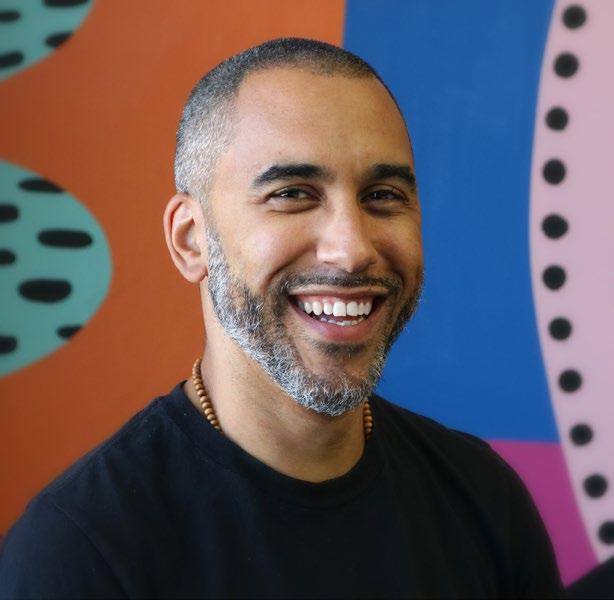
in the road to work together, at least regionally, to craft strategies and tactics that serve their organizations well. The good news is that there’s plenty of research that can inform these strategies.”
Consultant Mike Henry of Paragon said public media needs to deepen community engagement.
“Now that government funding is tethered to political whims, public media is liberated from financial bribery. Public media’s shackles are off. That’s a good thing,” he wrote.
Henry says public media’s “local mission is to serve entire communities and not red or blue, and don’t change with the political winds.”
One positive response “could be a new era of collaboration and shared services that will allow many
“I think we’ll see consolidation where it makes geographic and economic sense, with smaller broadcasters being absorbed by larger organizations. ”
approach culture and music. We feel strongly that the pendulum will swing the other way,” Lee said.
The cuts to CPB did not come out of the blue, and at least some outlets were already laying plans.
Steven Williams, president/CEO of Newark Public Media’s WBGO, says the station began preparing for possible cuts two years ago.
“The adjustments in staffing and spending also supported the projected relocation to a new facility in 2028. We are now fully acclimated to the new normal,” he said.
WBGO in its fundraising is offering a “clear, calm, succinct veracity” in its communication campaigns. That’s coupled with “placing greater emphasis on fundraising” via state and local funding avenues.
“We’re also utilizing our digital assets to a greater extent — e.g., streaming pre-roll/post-roll electronic newsletters and direct mail campaign,” Williams said.
Radio consultant Fred Jacobs wrote in his blog: “It would behoove public radio at this tumultuous fork

stations to survive as a group rather than a standalone station,” he says.
Rima Deal, president of the National Federation of Community Broadcasters, said public media will endure these latest developments but must evolve.
“Without CPB support, the infrastructure that connects stations to one another, to audiences, and to music rights will be dramatically reshaped. The familiar national networks may remain visible, yet the real test of survival lies with the smaller, rural, tribal and volunteer-powered community radio stations,” she told RW in an email
“These are not miniature versions of NPR or PBS; they are lifelines, often the last remaining source of local news, cultural expression and emergency alerts.”
While NFCB is not a lobbying organization, Deal says it has been engaged in education and advocacy throughout the crisis.
“We work across the political spectrum … our role is to ensure lawmakers — Republican, Democrat and independent — understand that community radio is civic infrastructure, much like libraries or volunteer fire departments. At this moment, we are focused on helping stations survive the immediate shock of federal defunding.”


John Bisset CPBE
The author is in his 34th year of writing Workbench. He handles western U.S. radio sales for the Telos Alliance and is a past recipient of the SBE’s Educator of the Year Award. Send your tips Workbench submissions are encouraged and qualify for SBE recertification credit. Email johnpbisset@ gmail.com
Maybe you’ve had the experience: Your station is having a new antenna installed. The old one is too damaged to be reused, so the rigger removes the brackets and hauls them away or just leaves them on the ground.
Frequent contributor Frank Hertel of Hertel Engineering tells us that his friend Jeff Oestreich showed up at Frank’s shop one day with brackets manufactured by ERI. You can see in the first photo how beefy they are. Such workmanship doesn’t belong in a scrap yard!
Jeff and Frank pondered what could be done with these. How about making shelf brackets?
Longtime readers will remember our story about an engineer who created a workbench and shop out of leftover Kindorf, a brand of metal framing product used to support electrical, plumbing and mechanical equipment.
Talk about rugged. Given that it weighed a ton, that workbench wasn’t going anywhere!

With such creativity as inspiration, Frank and Jeff rounded up a bunch of tools for the purpose of removing unwanted parts of the mounting brackets. Every tool visible in the second photo was used.
Top
Don’t scrap your old antenna mounting brackets.
Right These tools were all used in the conversion. Especially the sledgehammer.
They fitted a small grinder with a cutting disk and a larger one with a grinding disk. The latter would be used to remove excess welding material after Frank and Jeff had cut away unnecessary parts of the bracket. (The brackets are stainless steel and will eat up the cutting disks quickly, so keep several disks at hand.)
A reciprocating saw could reach places the cutting wheel could not. Once the welds were cut through completely where possible, they used a two-pound sledgehammer to bend the unwanted material away from the “L” part of the antenna bracket, to weaken its second weld.
Next they used the cutting wheel to cut through the exposed, weakened remaining weld as far as the wheel



“The brackets are stainless steel and will eat up the cutting disks quickly, so keep several disks at hand.
”The finished product is ready to support most anything.
would reach. They used the reciprocating saw to thin out the rest of the remaining weld. With the two-pound sledge they beat the unwanted material back into its original position. They continued to hammer, beating the unwanted material back and forth, making it hinge, until the weld fatigued and broke off.
Frank and Jeff say that if you embark on a project like this, you’ll likely find a better and faster way of removing unwanted material. Send us your tips!

The third photo shows the finished product. These brackets will support nearly anything.
Good morning, TRS jack!
David Gale says he spent a year, a week and a day in Vietnam. Ten months of that time was at Armed Forces Viet Nam (AFVN).
At the time David was one of six technicians on the radio side but the only one who’d been college-trained in broadcast engineering. The rest trained in other electronic servicing but not broadcast.
Because of his familiarity with consoles, turntables, tape recorders, cart machines and transmitters, he was able to fix many of the equipment problems that came up.
David recalls that his associates were scared of the Gates BFE-10C FM transmitter. One told him that when he hit the Plate On button, an arc followed his finger out to 6 inches or so!
When David inspected the rig, the only thing he noticed was that the high-voltage contactor mounted on the back door mount of the transmitter was badly pitted. He replaced the contactor with a spare from Gates. He hit the Plate On, and down she went.
David couldn’t see how changing out a simple three-leg contactor could induce this problem. He opened up the Arrow Hart contactor and found that two of the phases were physically cross-connected within the assembly. After the corrected the wiring, the contactor and transmitter worked fine.
David blamed Gates at the time, but the fault was probably Arrow-Hart’s. His warning for today’s broadcast engineer? Always check spare parts, comparing them to what is being replaced.
Here’s another note from David’s logbook of his days at Good Morning Vietnam:
David needed to figure out why a feed to their network stations was failing. It turns out that the headphones were wired in parallel to the console output. A tech had installed a shorting tip-ring-sleeve headphone jack as the headphone feed jack. When the tech plugged in headphones, everything worked fine. But as soon as a newsman would finish his report and yank out his headphones, the jack would do what it was designed to do, shorting the jack and the console output. But because headphones often were left plugged in, this sporadic problem was difficult to trace.
Do David’s memories stir up any similar experiences from your career? Send them to me at johnpbisset@gmail. com

Here’s who took the honors at the IBC Show in Amsterdam
adio World has announced the recipients of the Radio World “Best of Show” Award at the 2025 IBC Show in Amsterdam.
The awards celebrate companies leading the way in media and technology, as exhibited at the convention. Manufacturers pay a fee to enter. Not all are winners. Information about how the program works can be found in an FAQ at www.futureevents.uk/BoSawardsIBC

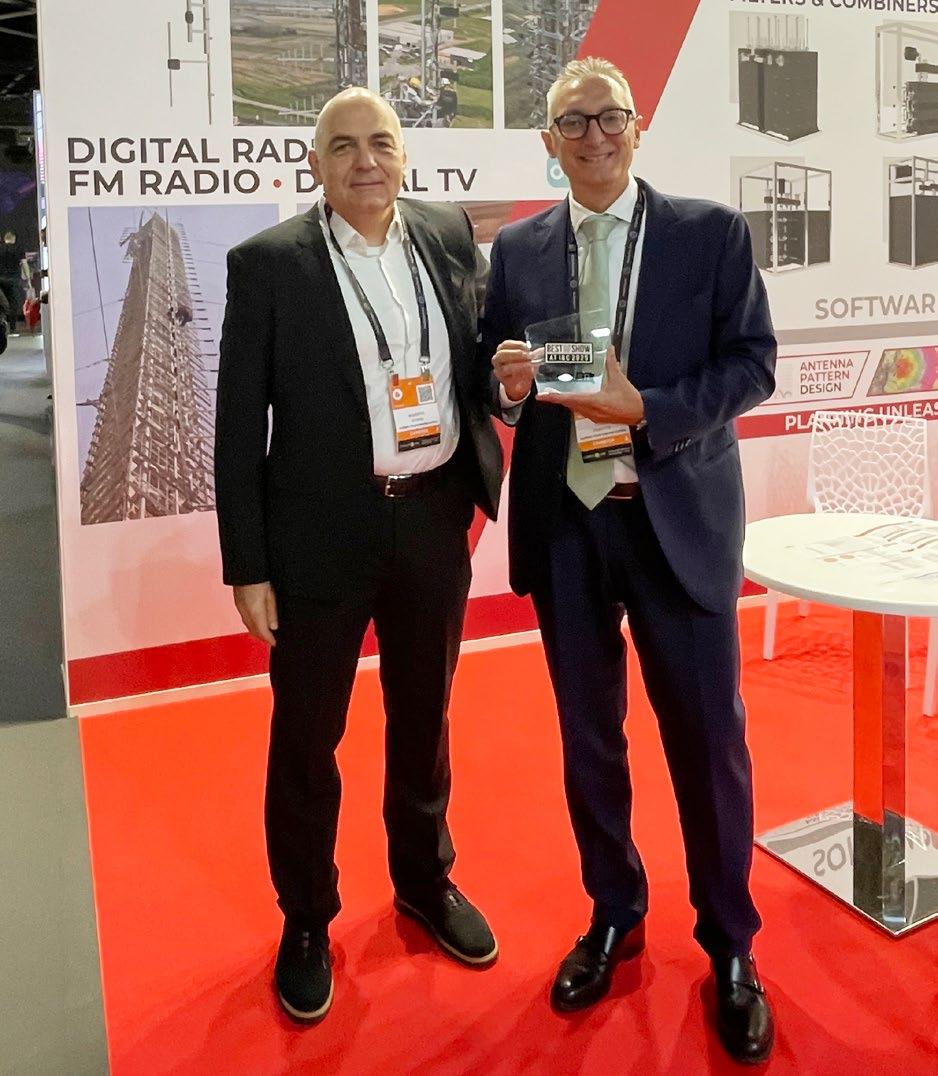



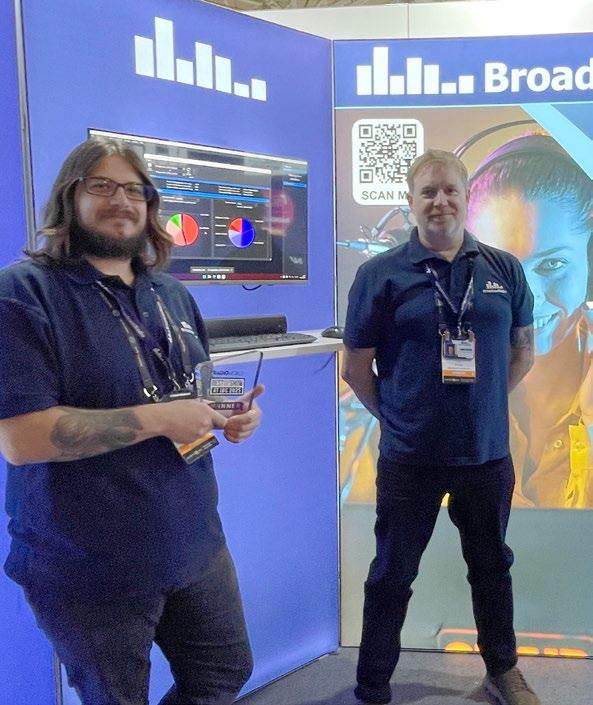







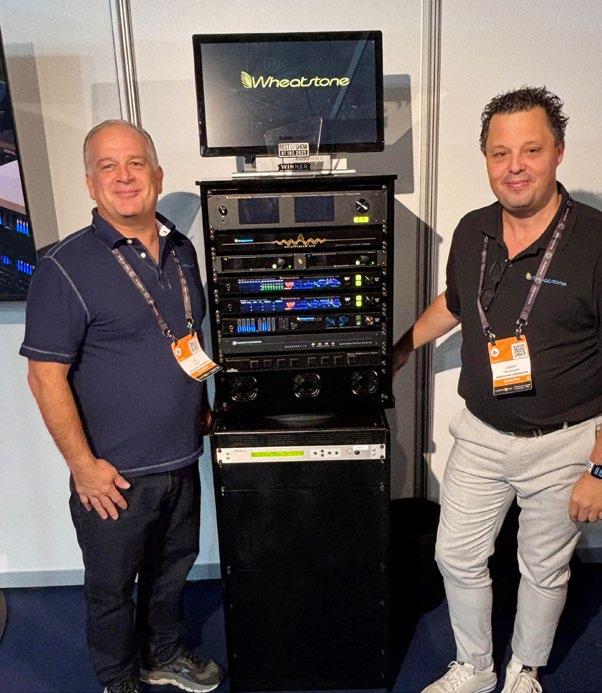
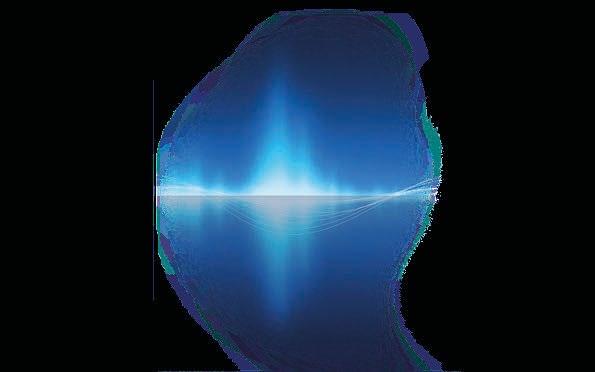
Writer

James O’Neal
The author is a frequent contributor and former technology editor of our sister publication TV Tech.
Interference in the form of RF noise has been associated with AM broadcasting since it came into being more than 100 years ago. One early engineer remarked that static noise “is like the poor; it will always be with us.”
The industry managed to overcome the effects of natural and manmade noise for decades. Unfortunately, manmade RF noise has been a source of increasing concern, causing some to write off AM as a lost cause. Others take a more hopeful view on AM’s viability; one of these is consulting engineer John Kean.
His research suggests that good AM radio reception is still possible in large metropolitan areas (see our March 12 issue, page 20), and he has been investigating common sources of noise that may drive listeners away. The project has culminated in a series of webinars produced under the auspices of the Society of Broadcast Engineers.

What prompted these webinars? Are they a followup to your National Radio Systems Committee study involving AM reception in urban areas?
Right Field strength map of 50 kW station WFED on 1500 kHz. Kean says a 25 mV/m groundwave is necessary to overcome RFI in his home, but the station delivers it only within the red contour. Compare to the 2 mV/m contour used for regulatory purposes.
John Kean: They are connected, because the NRSC’s working group views RF noise in the medium-wave part of the spectrum to be one of the biggest technical problems for AM radio by far. This continues to drive listeners away. The content may be something they want to hear, but they don’t want to listen to the noise. Younger listeners may not even consider trying AM simply because of its reputation for low quality.
I was asked to chair the NRSC’s document working group in 2015, and there were some documents dealing with AM that needed updating. This got me interested in working with the AM improvement group, where I heard a lot of discussions about noise. This prompted me to do some studies. I discovered that AM noise wasn’t that bad on the highways. I also discovered that urban clutter in built-up areas can greatly affect signal strength.
How bad is interference in home listening environments now?
Kean: I found in my own home situation that it takes a signal of at least 25 millivolts per meter to overcome the noise. This is a really large amount signal compared to the 2 mV/m figure used for regulatory allocations and station marketing purposes.
Most of this is attributable to switching power supplies. They’re compact and cheap, and for years the FCC has allowed these to be sold and distributed in the U.S. It’s clear that many of these devices are not FCC Part 15-compliant. While broadcasters may have been aware of this, there’s been very little done to enforce Part 15. Switching frequencies are usually below 150 kHz, but with harmonics sometimes extending across the band and up into HF spectrum.
What key points do you cover in the webinars?
Kean: In the first session, I address how noise comes about. Although we might assume that this is something everyone is familiar with, there are some engineers who
Orban’s Optimod 8000 processor has turned 50. We are featuring a series of interviews of Bob Orban in conversation with Radio World Editor in Chief Paul McLane.
Here is an excerpt from Part 1. Read the full interview at www.radioworld.com/blog/ bob-orban and watch this space for the next in the series.
Paul McLane: How did you get into FM processing?
Bob Orban: Back when I was at the student radio station at Princeton, I’d already made my first compressor using an opto-coupler, with a Fairchild Conax as the peak limiter and high-frequency limiter part of the processing chain. But then when I moved to California to get my masters in EE at Stanford, a pair of my friends from the station in Princeton moved to California at the same time as I did. Lee Gahagan, who had been station manager at one point, wanted to be in commercial broadcasting and had purchased KPGM in Los Altos. Jeff Schaffer came out to get his law degree at Stanford.




I thought, “Well, we have to deal with that problem. So how am I going to make non-overshooting low-pass filters?” I gave that some thought, made some experiments, and finally came up with something that worked pretty well, put it on a breadboard, and lo and behold, you could put that on the air, and the overshoots went away.
At this point, Eric Small comes into the picture. Eric was a well-known consultant in New York City and specialized in making radio stations loud.


As a class project as part of my master’s degree, I had done my first FET compressor with program-controlled time constants. That became the broadband compression part of my “overload prevention system,” which I had built for KPGM.
This was my first processor that included a full FM processing chain. It just used a pre-emphasized clipper for the highfrequency control.
When we put this thing on the air, it wasn’t controlling modulation very well. I knew that it was controlling the peaks perfectly at its output — I could put a scope on it and the peaks were nice and flat — but looking at the new Belar modulation monitor they had at the time, on things like Bert Kaempfert’s “Wonderland by Night,” the muted trumpet was going up to 130% modulation. I called Arno Meyer at Belar and asked him, “Why is this happening?” He said, “Oh, the overshoot is caused by the ringing in the low-pass filters of the Collins stereo generator.”
I showed this mono breadboard to Eric, and he put it on his Belar, and he was mightily impressed. He thought this thing had big commercial potential. The one problem that it didn’t solve was how to bypass the low-pass filters in the existing transmitter stereo generators. I told Eric that the logical way to solve this was to incorporate the stereo generator into the audio processor, which no one had done yet.
Eric mulled it over for a while and finally agreed with me. The concept of the 8000A was born, and John Delantoni and I worked out a distribution agreement with him stipulating that he would be the representative for it.
McLane: Who came up with the name?
Orban: That was me. I remember driving back from San Francisco and thinking about what to call it. There was Audimax, three syllables, Volumax, three syllables. So I thought, “Optimod.”
Optimum Modulation.
It’s the classic combination of the familiar and the new, which is always the trick to making a hit record.
McLane: Do you remember how much it cost?
Orban: It was about $3,000. And we increased our sales by an order of magnitude in one year. We started doing $3 million a year instead of $300,000.
Read the full interview at www.radioworld.com/blog/bob-orban
Next time: The early Optimod years.

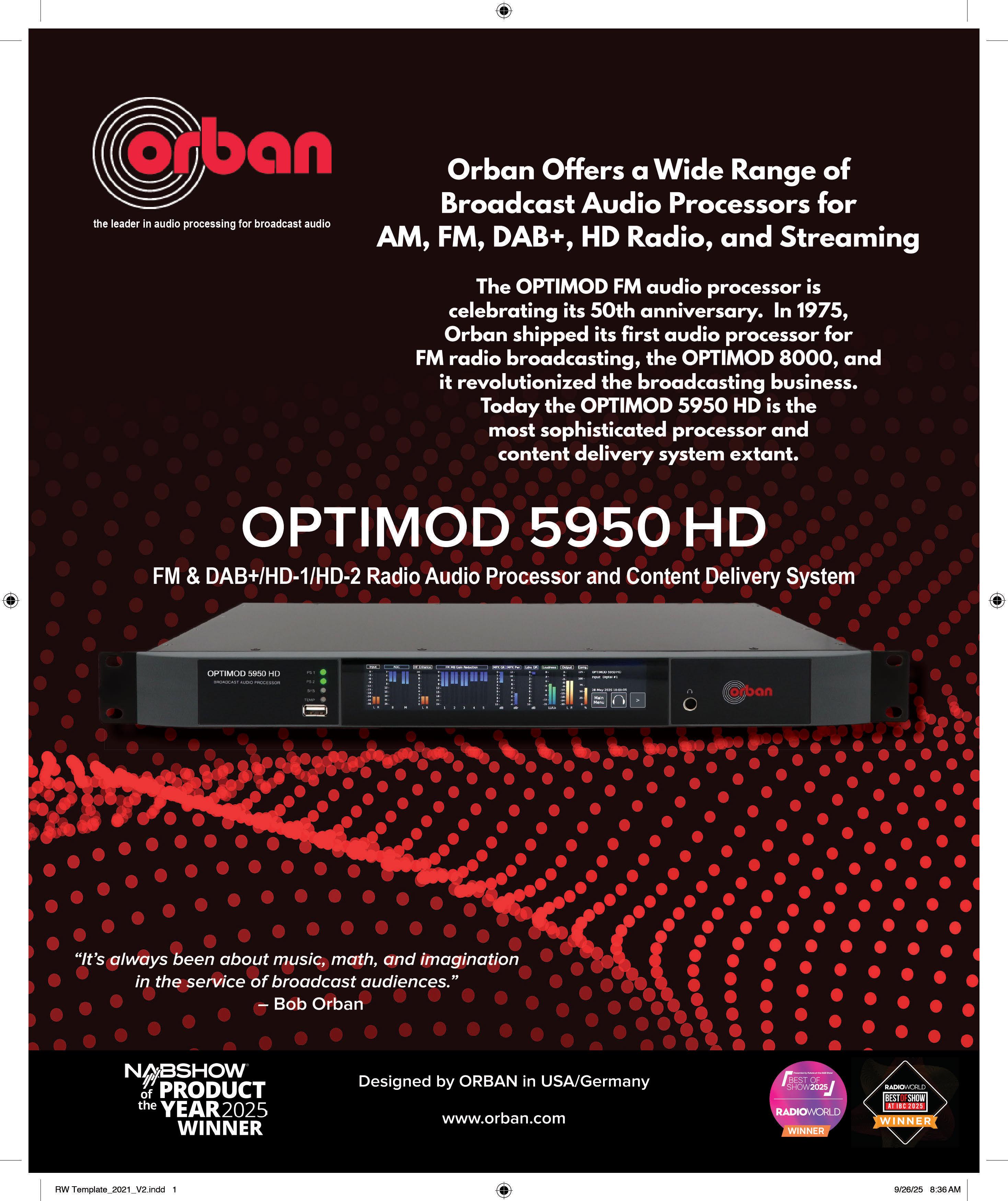
Right John Kean
may be new to the industry, particularly who came from other areas such as computers or audio, where RF noise isn’t really a big concern.
I introduce participants to potential noise sources and the concept of unintentional radiators. I differentiate between noise that occurs on roadways and how it can be different from that occurring in indoor environments.
I’ll discuss noise from switching supplies in detail, including how it is conducted, and how to locate and measure it. And I’ll be addressing such things as “self-interference,” which may also be new to those who have never worked in a situation where studios and transmitters are co-located. I’ll discuss techniques that are helpful in keeping transmitter RF out of analog and digital lines and equipment.
How deep a dive into noise abatement will this be?
Kean: I’m planning to discuss shielding techniques for blocking unwanted signals from studios and how to construct your own interference filters.
What are some of the other things on the webinar agenda?
Kean: I’ll also look at interference to AM stations from adjacent-channel broadcasters. The 10-kHz spacing we use is a century-old norm, but it results in “splatter” to your next-door neighbors. Over the years, changes in program content and audio processing have exacerbated this problem. I think that even with a minor change in occupied bandwidth, broadcasters can substantially reduce mutual interference and even improve their own audio. Another thing I plan to talk about is the degraded nighttime coverage of stations due to the increased number of stations on the air and reduced separation between them.

Is there anything new that may be a concern and that we should be aware of?
Kean: There is another relatively new noise source that could affect both indoor and outdoor or mobile AM reception. This is the technology that’s being developed for wirelessly charging electric vehicles. These are very powerful RF interference sources — 10 kW power supplies in one’s garage. This is something that broadcasters really need to get the FCC to focus on. We have to make sure that emission levels are limited.
I still believe that AM is viable. It has the ability to reach millions of listeners, but it’s up to the AM broadcasters to protect themselves from harm. They have to convince the FCC to protect them from this new source of interference.
“Switching power supplies are compact and cheap, and for years the FCC has allowed these to be sold and distributed in the U.S. It’s clear that many of these devices are not FCC Part 15-compliant.
How can readers access the webinars, and who else has been involved in helping?
Kean: I did the first in August and the second is scheduled for late October. The third will take place in November. Plans are to archive them. Information is available on the SBE website at http://sbe.org
David Layer at the NAB has been supportive and helped quite a bit in preparing material for some of my earlier presentations. And Gary Cavell of Cavell, Mertz & Associates is joining me in the webinars and has been helpful in presenting some of the material and providing greater insight.
Are you involved in any other initiatives for improving AM?
Kean: I’m working on a project for enhancing AM station coverage in urban areas through the use of on-channel repeaters or single-frequency networks. Stay tuned.
Writer
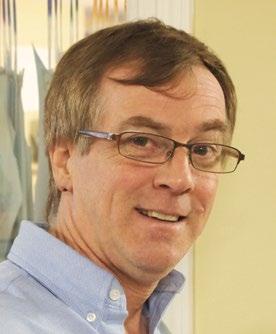
James Careless
The author wrote here recently about the nRSP-ST softwaredefined radio.
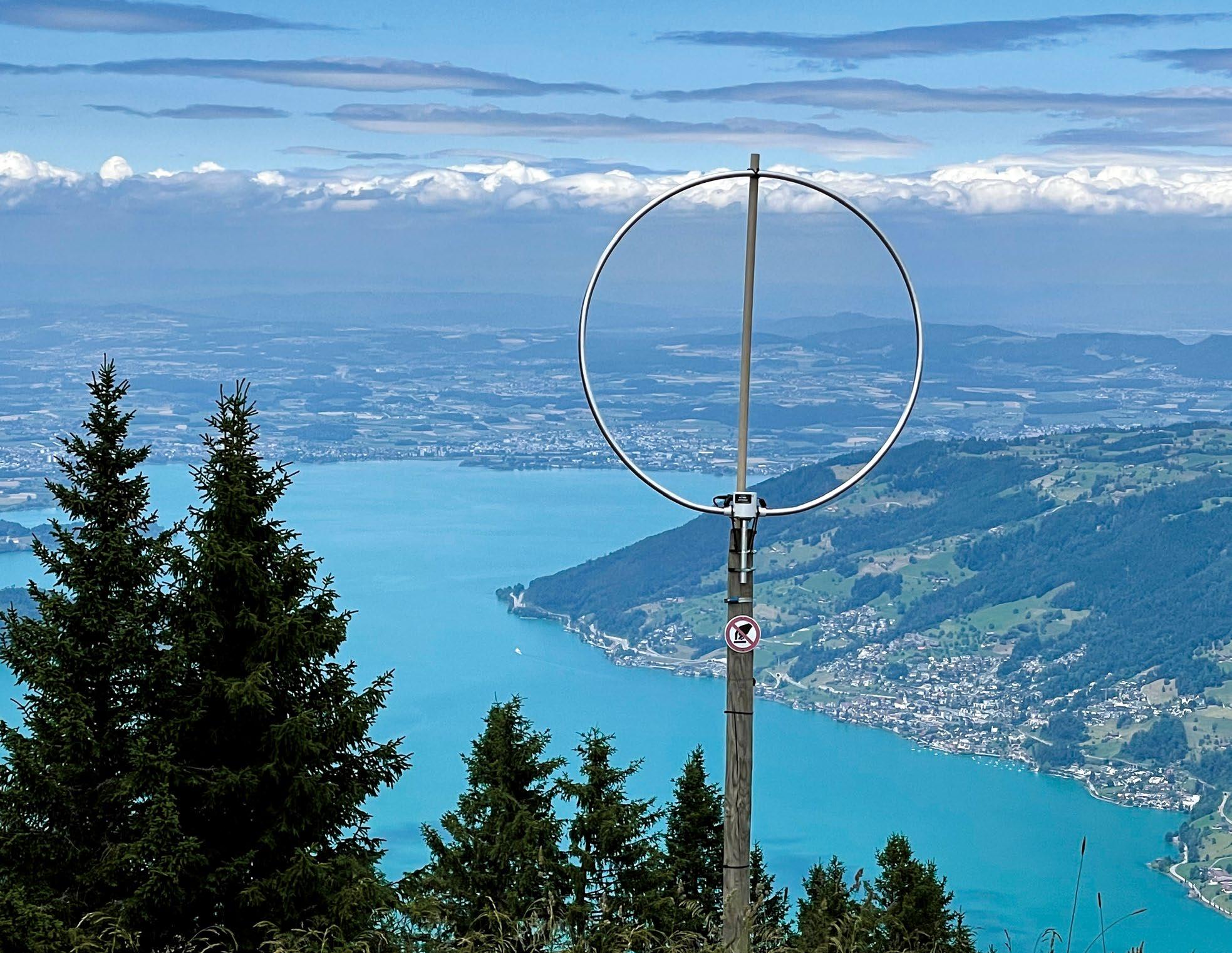
Even with the loss of the Voice of America, the international shortwave radio bands are still alive with stations worth listening to. But what can you do if you don’t have a shortwave radio receiver, and/or live in an urban area where reception is difficult?
Above
This Wellbrook ALA1530NL Loop, deployed at the Mount Rigi remote DX setup, services a public WebSDR Server for HF band monitoring.
The answer is to use the internet to access remotely tunable shortwave radio receivers located around the globe. By going through these websites — which are free to use — you can get a taste of what’s on the air worldwide.
That’s not all: Shortwave radio receivers that are based far away from your location may allow you to hear international stations that you would never be able to receive at home. And if you do already have a shortwave
radio, these web-based remotely tuned radios can help you confirm what you’re picking up at your own location.
Although the equipment used varies from site to site, the principle of remote radio tuning over the web is pretty constant.
The person who runs the website creates an interface — often styled to resemble an actual radio receiver — that the listener can interact with using the mouse. This form of control allows them to choose the frequency, control volume and often set various filters that improve the intelligibility of the signal being listened to.
So where do you find such radios? Well, you can always do a Google Search. However, it will save you time to surf
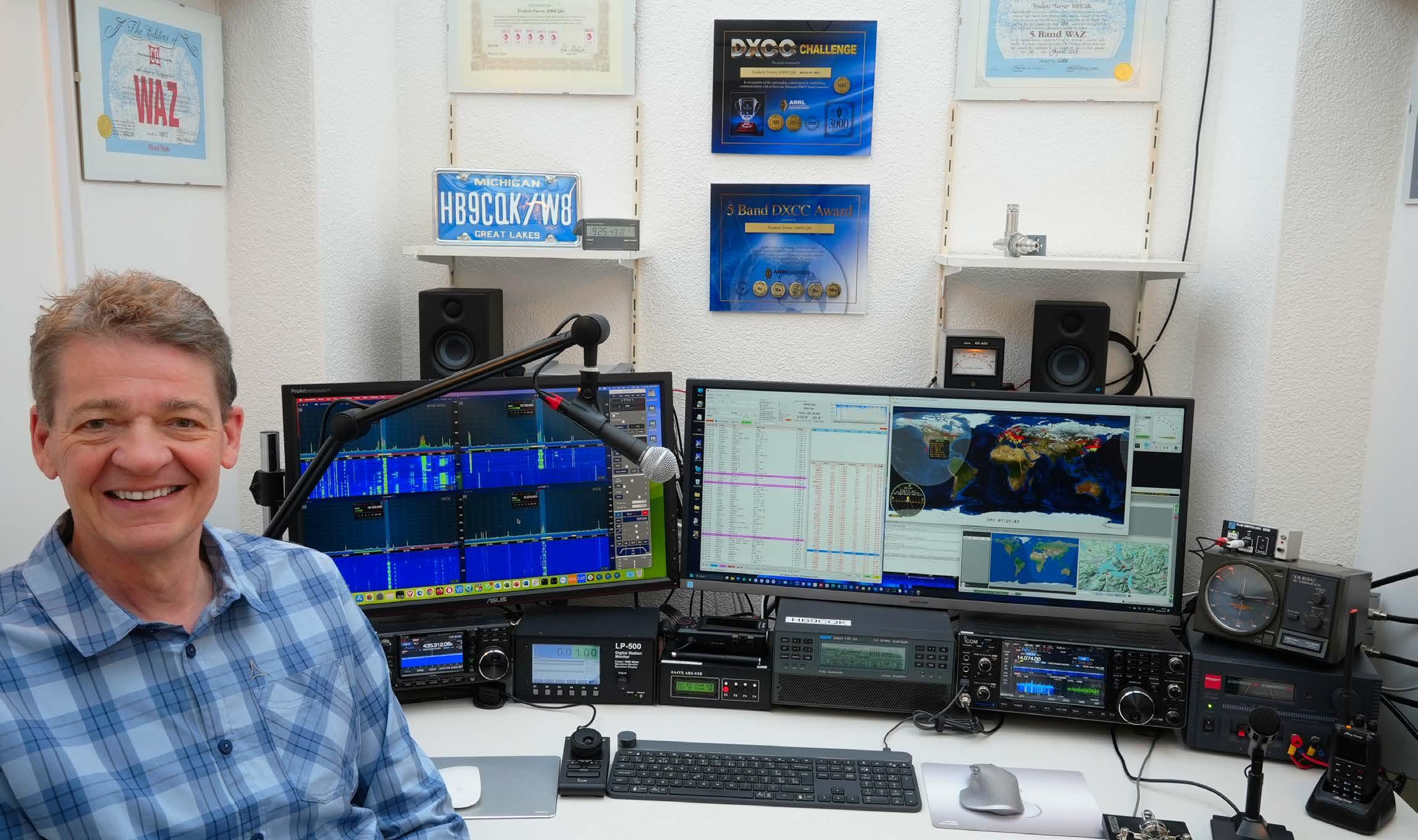
to Globaltuners.com, SDRSpace.com or WebSDR.org.
SDR stands for Software Defined Radio, a topic we have explored here in the past.
One truly cool site is the KiwiSDR map site at http:// rx.linkfanel.net/. As the name suggests, this link takes you to a world map of clickable KiwiSDR remote receivers.
The KiwiSDR platform is unique in that it supports up to four independently-controlled connections — each user gets to control their own audio and waterfall channels.
While the KiwiSDR offers independent sessions, other remotely-accessible SDRs may not. For instance, some setups are designed for only one user at a time, or they force all users to share the same frequency. In these cases, proper etiquette is crucial; don’t just log on and start tuning around!
A case in point: I tuned in Radio Exterior de España (REE) transmitting from Noblejas, Spain on 17715 kHz. The signal was readable but distorted and weak. I then used the KiwiSDR Map to connect to a remote tuning site in the country southwest of me; they had a clearer, stronger signal.
I was also able to use this same rural site to pick out signals that were just peeking out of the background electrical noise in my suburban neighborhood. This noisefree rural site was able to receive them cleanly, allowing me to hear numerous stations from southeast Asia that were otherwise unreadable at my home location.
Next, I started moving around the North Atlantic, to see which remote tuning stations were getting the best REE signal. The best reception site was located in Newfoundland, followed by Iceland. What was really cool is that I could check out REE’s signal strength in real-time around the world!
For your first stab at using a remotely tuned radio, I would recommend trying www.chilton.com/R8/receiver.
html. Operated by Jeffrey W. Chilton (amateur radio callsign KM4QH) in Reston, Va., its online interface is modelled directly on a classic Drake R8 radio receiver which you can operate using your mouse.
As for ideas where to tune to? The free website Shortwave.info can tell you which shortwave stations are on-air now, and help you identify any that you may come across.
Note: The times cited on this website use Universal Coordinated Time or UTC, which is the same as Greenwich Mean Time set in England. Just ask Google “what is the current time in UTC” to find out what it is right now (look for answers that use a 24-hour clock). This will help you figure out what stations to chase.
As I am writing, the time is 17:50 UTC. I use my mouse to type 15770 and then click on the orange button ‘F’ (for frequency) on the lower end side of the R8’s number pad. This takes me directly to WRMI (Florida) on 15770 kHz, which is coming in strong. (The audio level on this radio is very loud, so turn down your headset/speaker first.)


A little later, at 18:10 UTC, I use the R8 to tune to 13790 kHz. Based on the somewhat mangled French language broadcast I connect to and the reference listed in Short-wave.info, I seem to be hearing BBC World Service in French transmitting from Madagascar off the east coast of Africa.
Since I can also tune the online R8 using its up-down tuning keys (they move 5 kHz per click), or by spinning the tuning dial on the interface, I move around the shortwave bands looking for stations.
Unfortunately, the reception conditions are poor today, which happens due to the ever-changing nature of the ionosphere above that reflects shortwave radio signals around the globe. So I cheat a bit by turning on my own SDRplay nRSP-ST software-defined radio (detailed in a previous RW article) and attic-mounted MLA-30+ 100 kHz to 30 MHz loop antenna to see what’s out there first. (I am based in Ottawa, Canada.)
I discovered what appears to be Radio France International, in French, broadcasting a weak signal to me on 17850 kHz from Issoudin in central France. (I confirm this first by checking the frequency on Short-wave.info, and then comparing what I’m hearing with RFI’s live audio stream at www.rfi.fr/fr/ direct-monde.)

Okay: Time to see how well the online R8 picks up RFI. I punch in 17850 kHz, and RFI comes in better
there — stronger, but still a bit garbled — than it does on my own rig.
When it comes to remote shortwave listening — in this case, as a sidebar to a multiband amateur radio station — it is hard to beat the setup operated by Wolfgang Sidler (HB9RYZ) and Fredric Furrer (HB9CQK) on Mount Rigi in Switzerland.
Located at a height of 1,660 meters above sea level, the remote radio station (online at www.hb9ryz.ch) uses a former Swiss Army radio mast to host a full range of amateur radio Yagi antennas on a rotable mount. The station also has a range of amateur radios that can be accessed online, as well as remote software defined multi-band radios.
“The army was going to tear this mast down in 2018, until myself and Frederic heard about it,” said Sidler.
“We signed a rental contract with them, and now we have used this site for five years — the highest and most modern Flexradio 6700 remote amateur radio station in all of Europe — to let people free of charge worldwide listen to signals, and see how well their own amateur radio broadcasts are being received in Switzerland. Every amateur radio operator can experiment with sending their own signal and receiving from Europe.”
As the website www.hb9ryz.ch details, maintaining the tower during Switzerland’s harsh, cold and windy winters is not a job for the faint-hearted. But the results are well worth it.
“You can reach and hear almost everything here in Switzerland,“ Furrer said. “If there is a very rare amateur radio station somewhere in the Pacific, we can always make contact. For example, Wolfgang and I managed to work in Guam on the magic 6m band, as well as one in Hawaii. That’s very, very rare in Switzerland, and it’s only because we have access to this amazing remote facility.”
A word to the wise: The new PhantomSDR-Plus SDR shortwave receiver on this site (http://rigi.dyndns-remote. com:8074/) may seem overwhelming to newbies, but the interface is intuitive. You can listen to the whole shortwave spectrum from 0 to 30 MHz including broadcast stations and amateur radio operators.

coal to a steam-powered radio — okay, it wasn’t quite that primitive. Still, all I started out with was a 1960s-vintage









Tracey Connolly, left, was named director of global broadcast sales at Nautel. She succeeds Wendell Lonergan, right, who is retiring.
Connolly was director of sales and business development for The Shaw Group Ltd., a Nova Scotia-based manufacturer.
Lonergan was at Nautel for 47 years. He was senior director of broadcast sales.
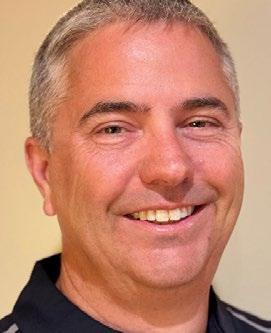
Burk Technology hired Craig Beaucage as broadcast sales engineer. It said he brought experience in RF systems and broadcast technologies.
“In his prior roles, Craig worked closely with broadcast engineers, translating customer requirements into technical design specifications for radio and TV antenna systems, managing large system deployments
and providing high-level technical support.”
For most of that time Beaucage was at Dielectric/SPX Communications as a proposal engineer and mechanical designer.

Telos Alliance made several moves. It promoted Cam Eicher to executive vice president of audio production, a newly created role intended to “bring a more unified product portfolio to market more quickly and ensure a cohesive and consistent user experience across products and brand families.”


Jim Armstrong was promoted by Telos to become senior director of sales for the U.S. and Canada. He had been director of eastern U.S. sales.
Jeff Williams was named director of sales for the western U.S. His parents, Jack and
Ellyn, founded Pacific Records & Engineering in 1969. Williams began his broadcasting career at 16, working with “Shotgun” Tom Kelly. His path continued at KFMB(FM) in San Diego and WRKO(AM) in Boston, followed by leadership positions with Gannett, Jacor, Clear Channel and Knight Broadcasting. For the past 10 years Williams was owner and GM of Yellowtec USA.
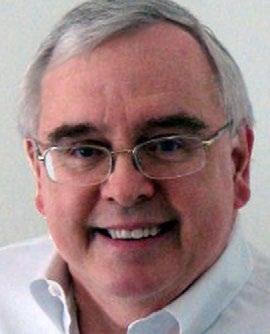
And Telos announced a new role for sales representative John Bisset
“After many years of serving radio broadcasters, John is transitioning to a new inside sales position, where his expertise and industry connections will continue to benefit Telos Alliance clients prior to retirement,” it said.
EVP of Sales, Marketing & Strategy cited Bisset’s “industry knowledge, technical background and personal connections” for making him a trusted resource. Bisset is the longtime author of Radio World’s Workbench column.
Send announcements for People News to radioworld@futurenet.com



Writer Matt Leland Vice President of Sales, Burk Technology
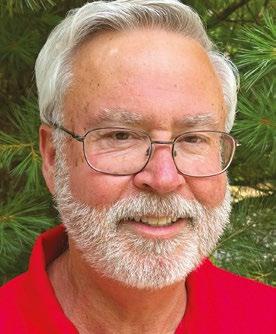
They play an increasingly important role in your site security
In today’s landscape, where transmitter sites face increased physical, environmental and cybersecurity threats, a modern remote-control system can serve as a first line of defense, helping to safeguard vital broadcast infrastructure, often with minimal human intervention.
Security and surveillance integration
Broadcast remote-control systems now offer a coordinated approach to site security, combining monitoring capabilities with real-time response tools. They allow broadcasters to manage alarm reporting with a high degree of precision.
deterrents to intruders, activated automatically when certain alarms are triggered.
Surveillance video, integrated into custom views, can be monitored alongside telemetry data, enabling engineers to visually confirm disturbances from anywhere. These views consolidate a variety of remote-managed security equipment and environmental data into a single, actionable interface.
Above
Manage
Multiple customizable email and dial-out lists can be configured to notify site engineers, station management or security personnel, depending on the nature of the alarm.
Alarm-specific messaging ensures that each recipient receives relevant information without unnecessary noise.
Audio annunciators or local sirens can act as immediate
Motion detectors provide interior and perimeter surveillance, while numeric keypads allow controlled access and enable or disable alarms. Door sensors monitor transmitter buildings, microwave sheds and ATUs. Even sound sensors offer security insight — a drop in background noise might indicate a failed fan, while unexpected noise at an unmanned site could point to an intruder.
Environmental monitoring can be seamlessly integrated into the same system. Parameters such as smoke, flood, temperature and humidity can be tracked continuously. Combined with built-in timers, these sensors enable
complex event correlation. When a door opens, a timer can begin that must be canceled at an interior keypad to avoid triggering an intrusion alarm.
Fault management for RF systems can minimize risk of damage to costly site infrastructure. Burk’s Arcturus Antenna Site Management system detects VSWR and reflected power faults rapidly, using three-strike logic and fast shutdown to safeguard high-value shared assets like combiners and antennas in multi-tenant sites. Continuous monitoring of forward power, VSWR, transmission line temperature and pressure ensures real-time visibility into system performance. These readings are displayed alongside other critical parameters on custom site control screens, giving engineers the tools needed for proactive maintenance and rapid response.
Modern remote-control systems such as the Burk ARC Plus benefit from an underlying architecture based on distributed intelligence with centralized oversight. Each sitebased control unit independently manages local resources, allowing normal operations — including timed events and on-air fault recovery — to continue uninterrupted even if central communications are lost.
Engineers can configure automated responses using intuitive drag-and-drop flowchart editors. Virtual channels compute values such as transmitter efficiency or heat rise in real time. Alarm and status conditions initiate immediate, predefined actions, and a broadcast-friendly calendar interface allows scheduled events like day/night mode transitions to occur without manual intervention.
As remote sites become more connected, securing digital pathways has become as vital as protecting physical access.
Remote-control systems should support a broad set of network access security measures that align with common corporate IT policies. These may include strong password

Above Fast reaction to VSWR and forward power faults.
Below
Enhanced network security using cloud-based or onpremises servers.
protocols, firewalls, VPN access, encryption, source IP filtering and network segmentation.
A particularly effective model involves linking all remote sites into a private network through Virtual Private Network (VPN) tunnels, shielding them from exposure to the public internet.
Systems such as Burk’s Arcadia consolidate communications to all sites over a single secure web link using Transport Layer Security (TLS). Depending on organizational preference, this centralized server can be cloud-hosted or maintained on-premises.
Authentication mechanisms should be equally robust. User access may be tied into the organization’s Active Directory infrastructure or handled through the built-in AD-LDS system. Access can be restricted not just by user but also by site and even down to individual control and monitoring channels, ensuring that engineers and staff only interact with resources relevant to their responsibilities.

This same architecture can extend beyond the transmitter site to the studio itself. By incorporating studio infrastructure into the remote-control system, engineers gain full visibility over air signals, IP streams, UPS systems, IT equipment and environmental conditions — especially valuable during unstaffed hours.
In an era where transmitter site threats are evolving and engineering teams are often stretched thin, modern remote-control systems can provide a centralized, intelligent solution for maintaining security, safety and operational integrity.

